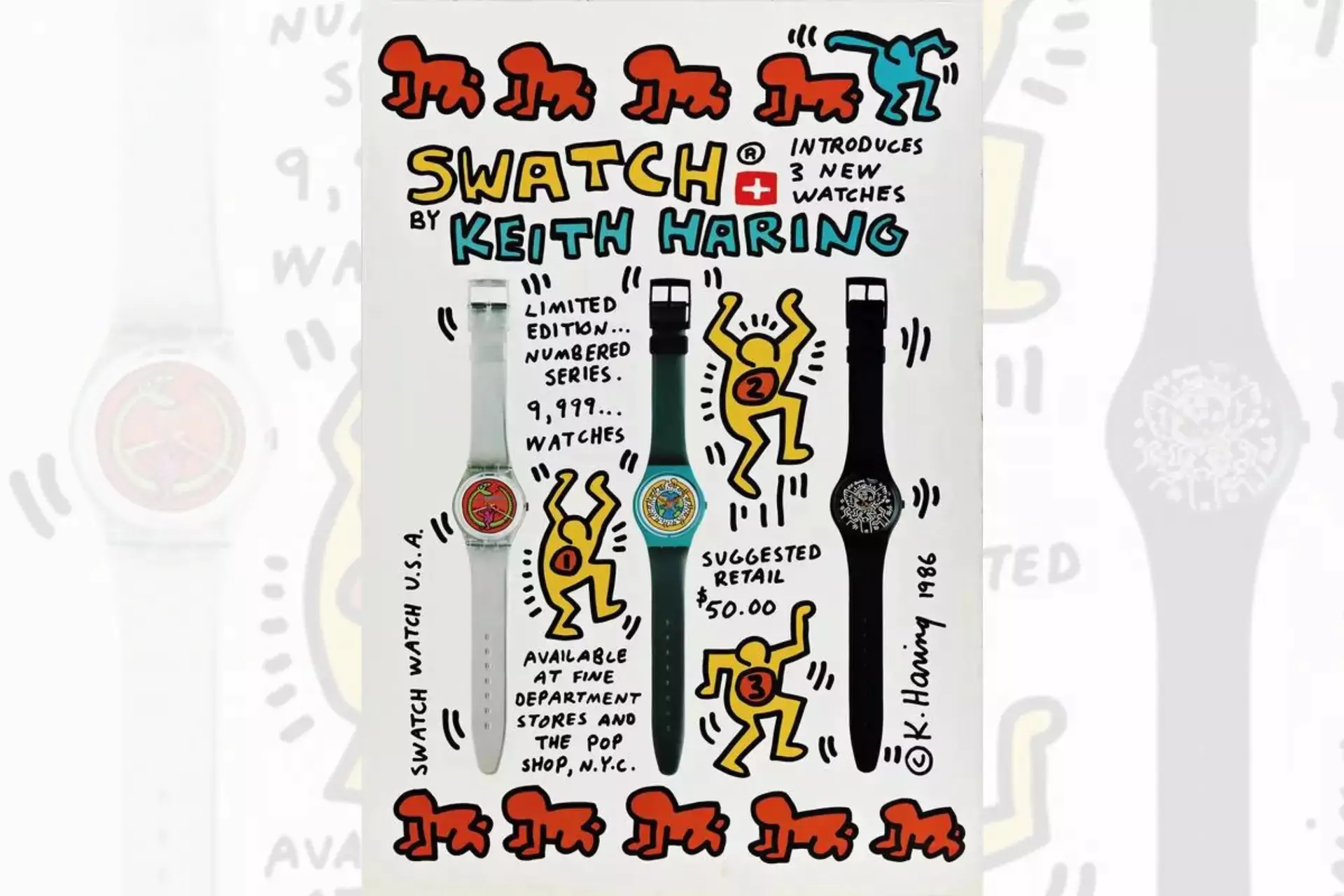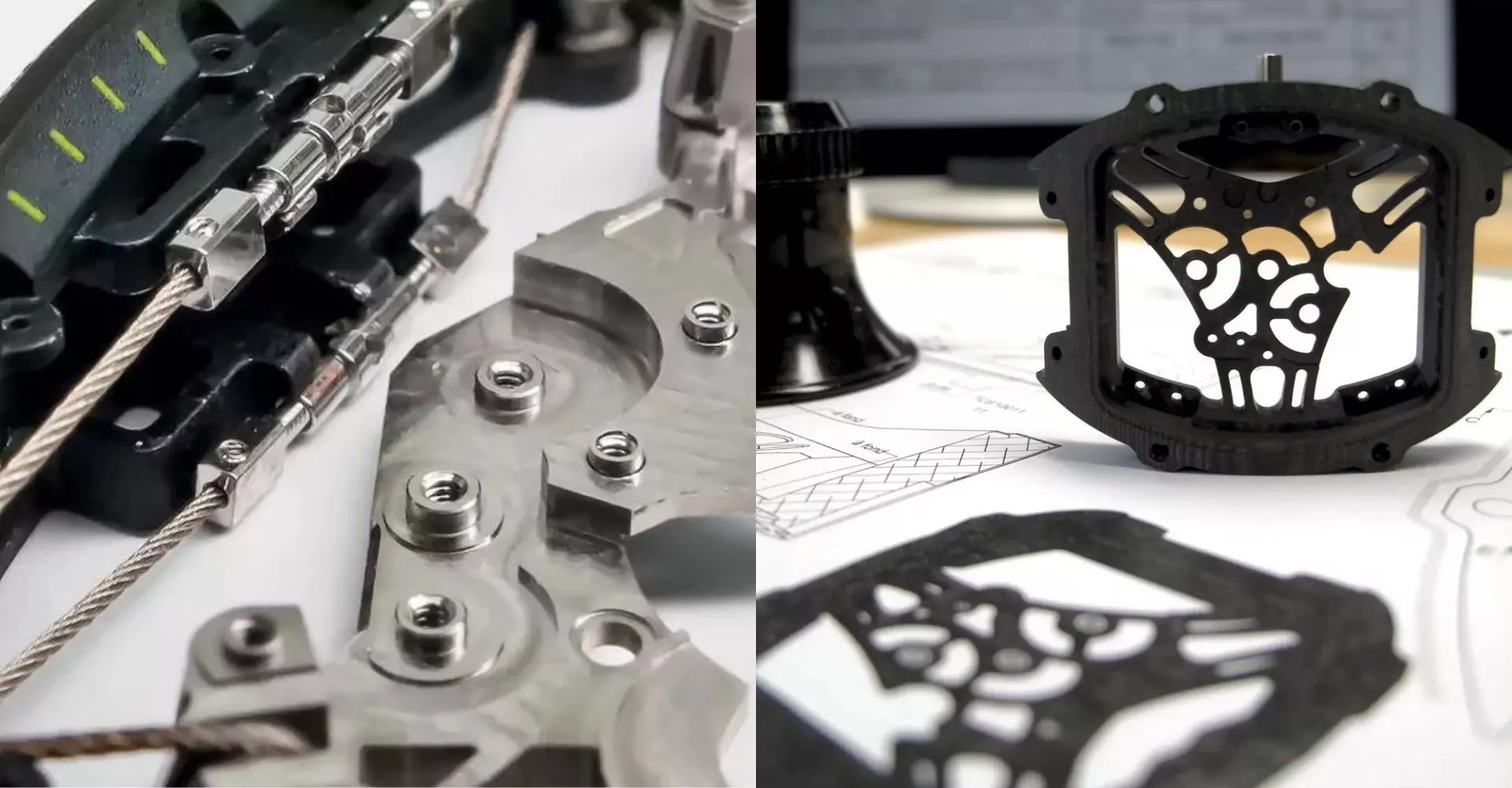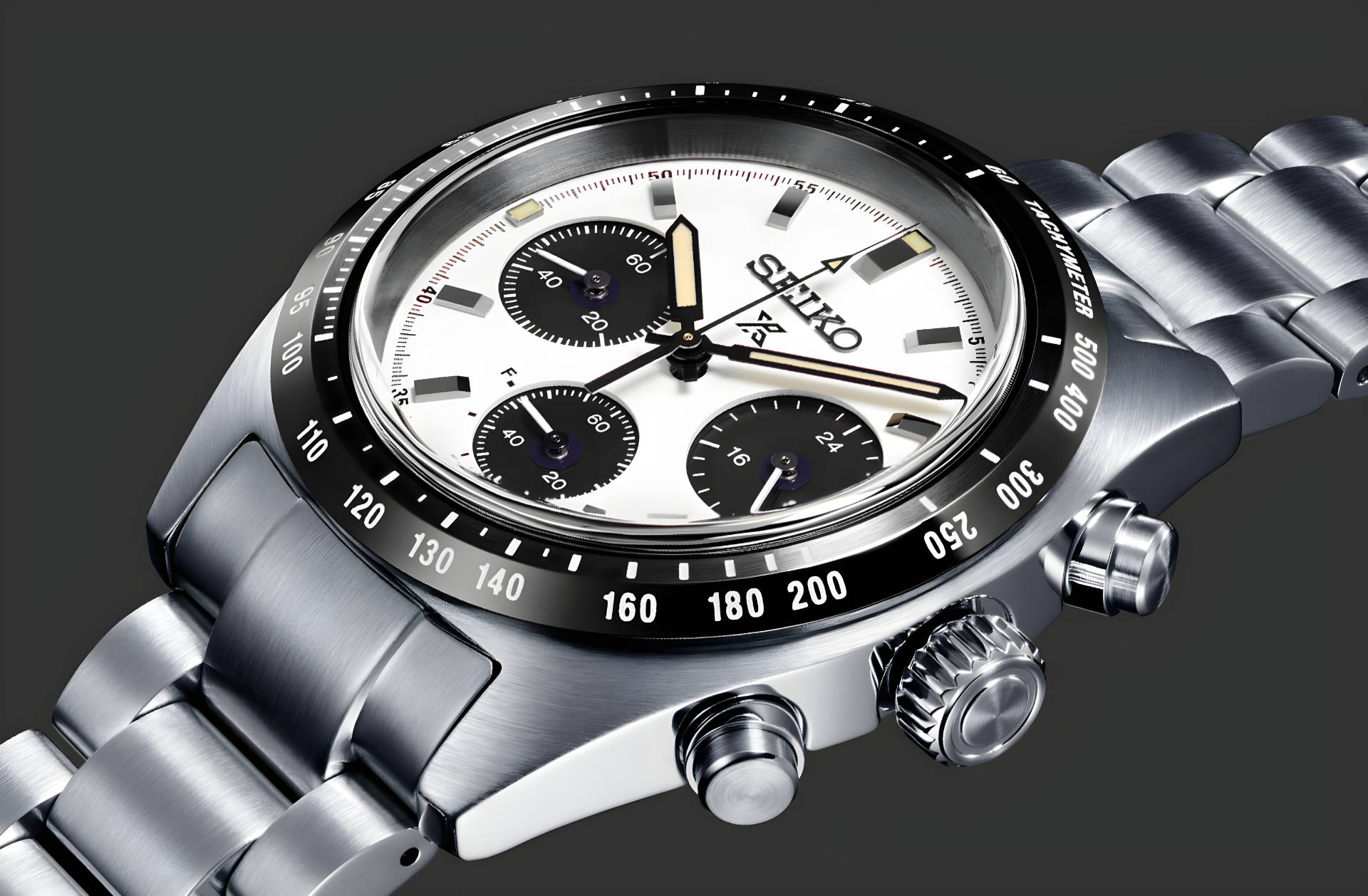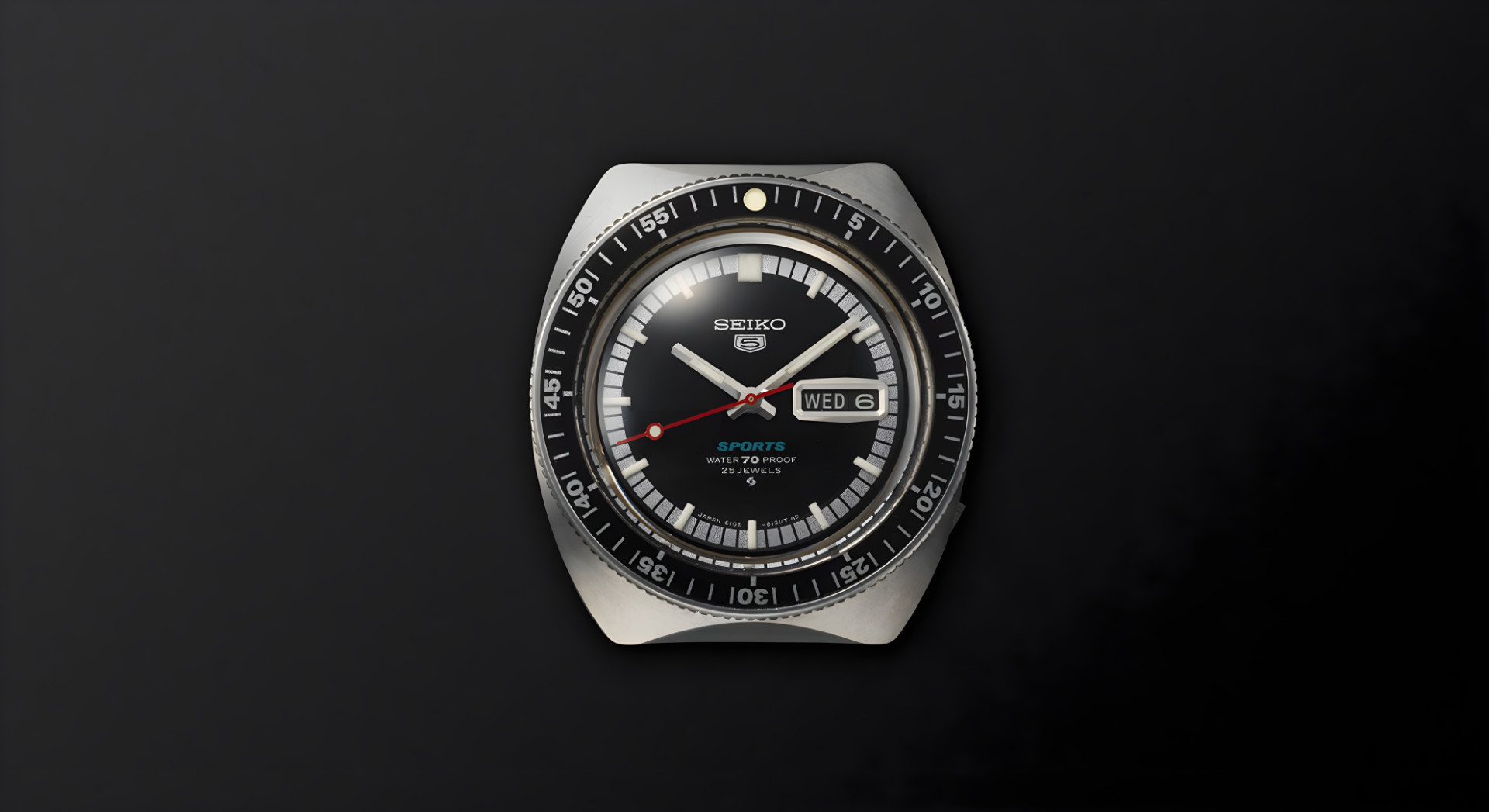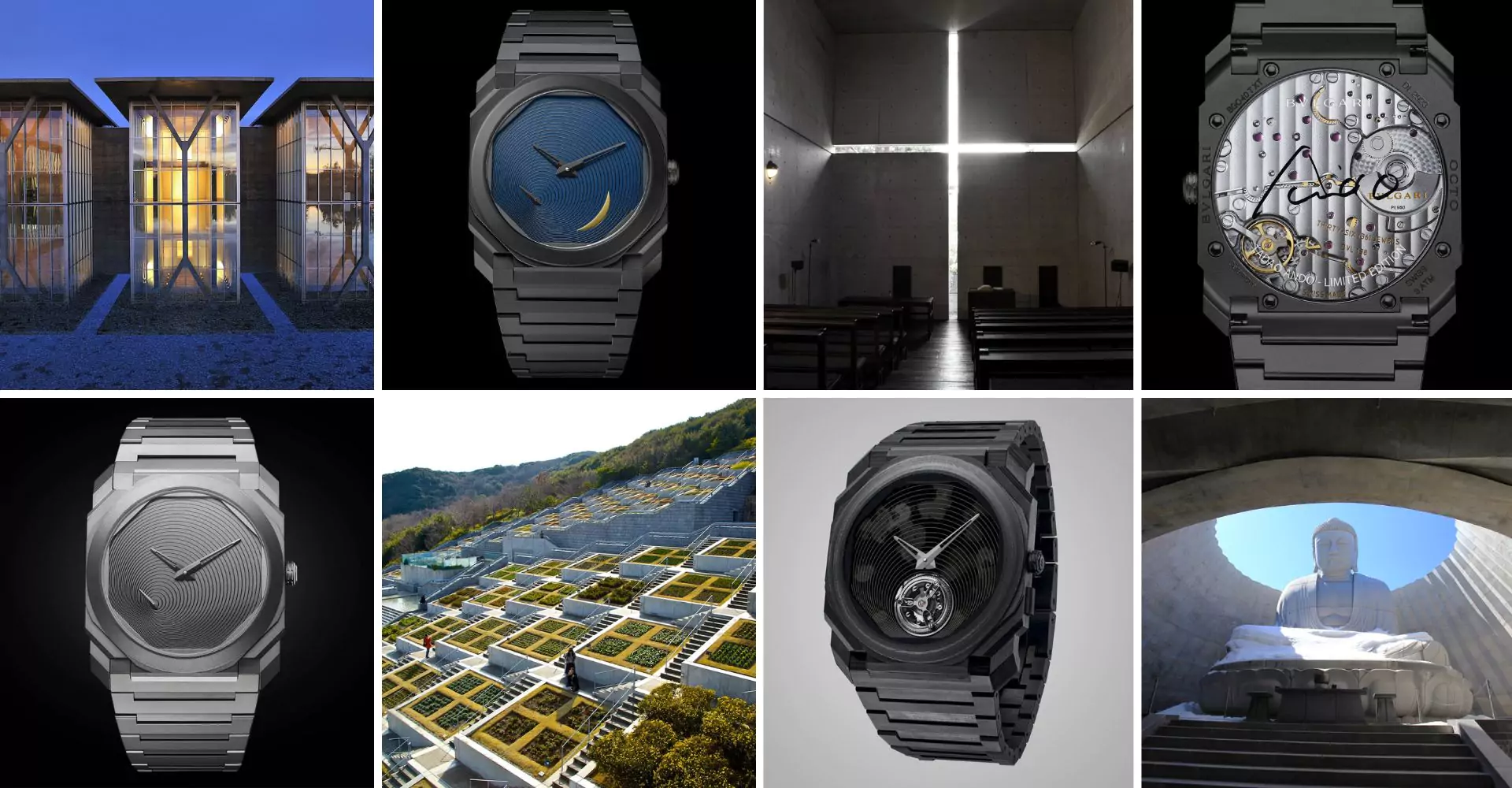The Murakami Hublot – art or bling, or the art of bling?
Do common territories exist between different objects and market niches? Looking around, it seems so. Many brands – or at least, their marketing departments – think that the fusion of styles is a good and right thing.
But that’s not always true, and more importantly, it’s not always possible, especially if it’s forced or if you don’t believe in it all the way. And that’s why, very often, collaborations between big brands don’t achieve the desired result. Instead, they originate something that wants to be neither meat nor fish, but in the end, it becomes something that has no meaning or character of its own.
What is certain is that few have the determination – or the madness – to go that far, risking themselves to obtain this result, thinking of touching areas that are different from those usually reached by an object that over time has become an accessory, such as a watch. And among those who have worked mainly in this borderline realm that divides art from mass production, we can only mention Hublot.
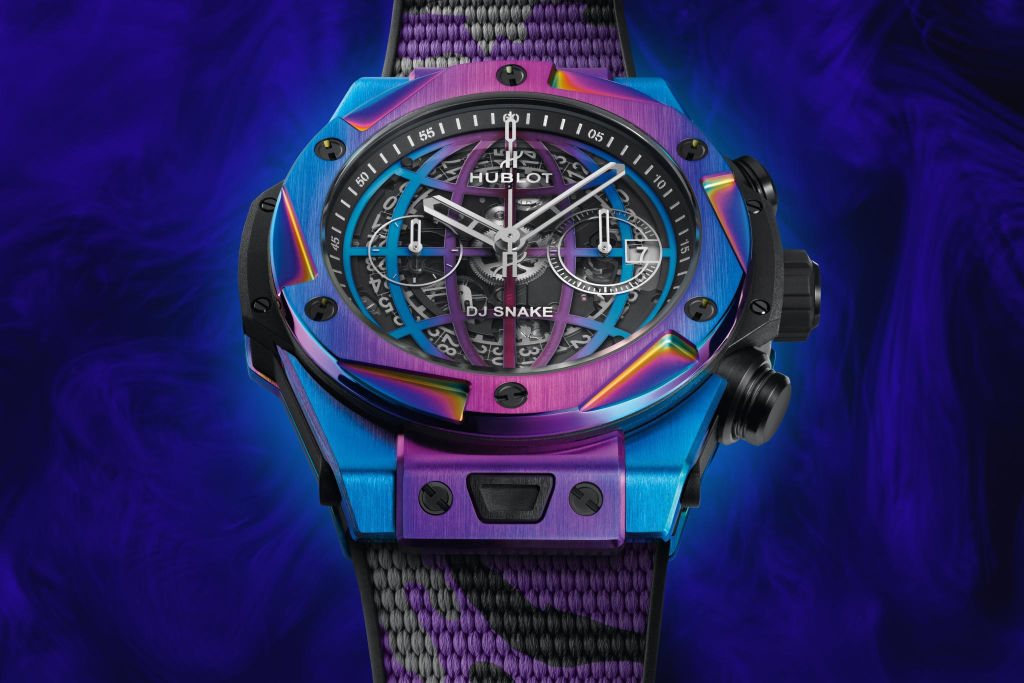
A brand that has made the Art of Fusion its philosophy
Watch enthusiasts either love Hublot or hate it. It’s challenging for anyone to remain indifferent to a company so countercultural to the normality of Swiss haute horlogerie. And for better or worse, Hublot has one characteristic: it’s not afraid to take risks. And as such, it has often relied on daring creative collaborations, which have led it to produce limited editions of timepieces that fully fit into this “Middle Earth” we talked about earlier.
And for those who don’t know it, the modern Hublot owes its character to Jean Claude Biver, who remodeled it in 2004, creating its bold and brazen character, so far outside the regular canons of Swiss watchmaking – and one of the characteristics that immediately accompanied its products was the search for 360-degree collaborations with brands, organizations, celebrities, designers, and artists – and it is precisely one of these that we want to talk about now, the one with the Japanese artist Takashi Murakami.
Murakami, between pop/manga and traditional art
Murakami is a well-rounded artist who combines the modern pop suggestions of his varied, characteristic humanized flowers with a deep knowledge of traditional Japanese decoration techniques to obtain art that lies somewhere between the past and the future, suspended, precisely, in this Middle Earth that Hublot loves to cross and bring its fans. In a world made of class, technique and maniacal precision declined by artistic experimentation.
His art combines pop elements, with echoes of Warhol and Koons, and mixes it with the Japanese suggestions of the Otaku, the subculture of 80’s manga from which he derives his figures, which look almost like modern naive works, with the exaggerated and a bit dazed smile typical of his typical humanized flowers.
And he has moved nimbly, wallowing like a koi carp through the different environments of traditional and modern expressive arts, ready to reinvent and reinvent himself through painting and sculpture, but also through adjacent fields such as design, video clips, and music, without disdaining commercial collaborations with brands of all kinds. And he did it through partnerships with brands and artists such as COMME des GARÇONS, Virgil Abloh, KAWS, Pharrell Williams, Nissan, Kanye West, Verdy, J Balvin, visvim, fragment design, Ben Baller, OVO, Google, Kirsten Dunst, and Billie Eilish, demonstrating thoroughly his pop ethic made of continuous and playful collaborations.
The first partnership ever was with Issey Miyake in 2000, and one of the last was with Louis Vuitton – a real game-changer. And this direct relationship with the LVMH group was probably the springboard that led him to interpret a timepiece as iconic in its way as the Big Bang Classic Fusion, launched in its first revised and corrected edition in 2020, and followed by another model the following year.
Hublot Classic Fusion Black by Takashi Murakami
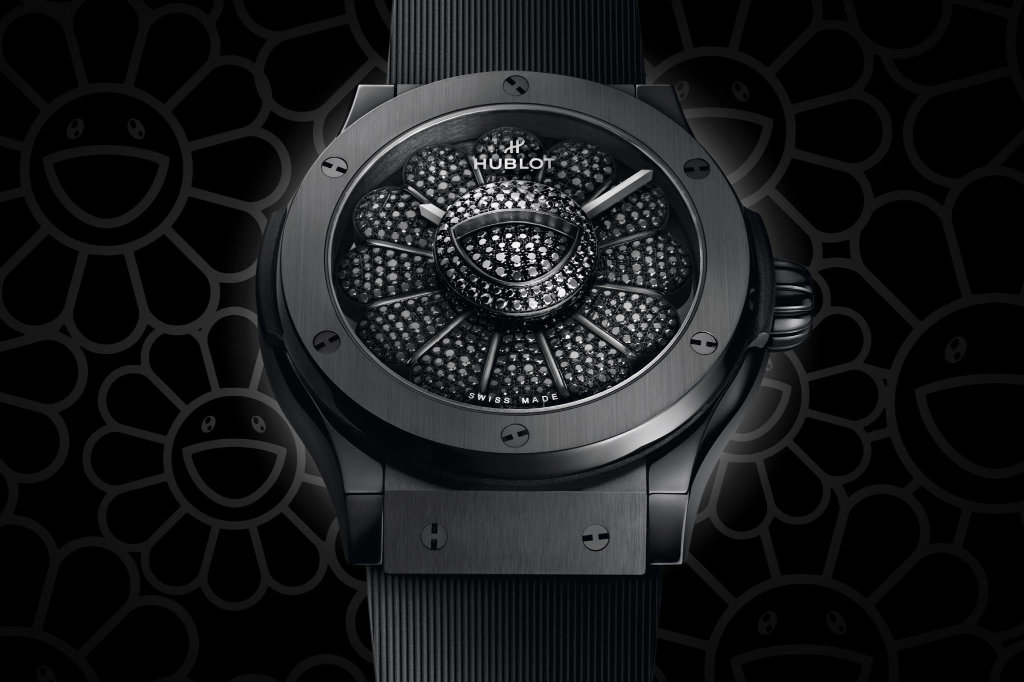
An attentive visit in 2020 to the Nyon factory was the spark that ignited the creative flair of the Japanese master, who wanted to combine the recognizability of his design signature, the smiling flower, with an understated preciousness that complemented it, playing with it and making fun of it. And the result was as expected.
It is an all-black watch – very different from the artist’s whimsical stylistic canons – which appears almost minimalist at first glance but turns out to be very rich after a more careful search. The dial is studded with over 600 black diamonds, which adorn the face of the flower and its petals, which, thanks to an ingenious system, rotate at every movement of the wearer’s arm around the “face” of the flower, which is instead glued above the sapphire crystal, creating a surprising three-dimensional effect that makes this watch extraordinary – more a sculpture than anything else.
A definite change of direction for the Japanese artist, who loves to play and surprise – and originated another version of the same timepiece the following year, the latter called Sapphire Rainbow.
Hublot Classic Fusion Sapphire Rainbow by Takashi Murakami
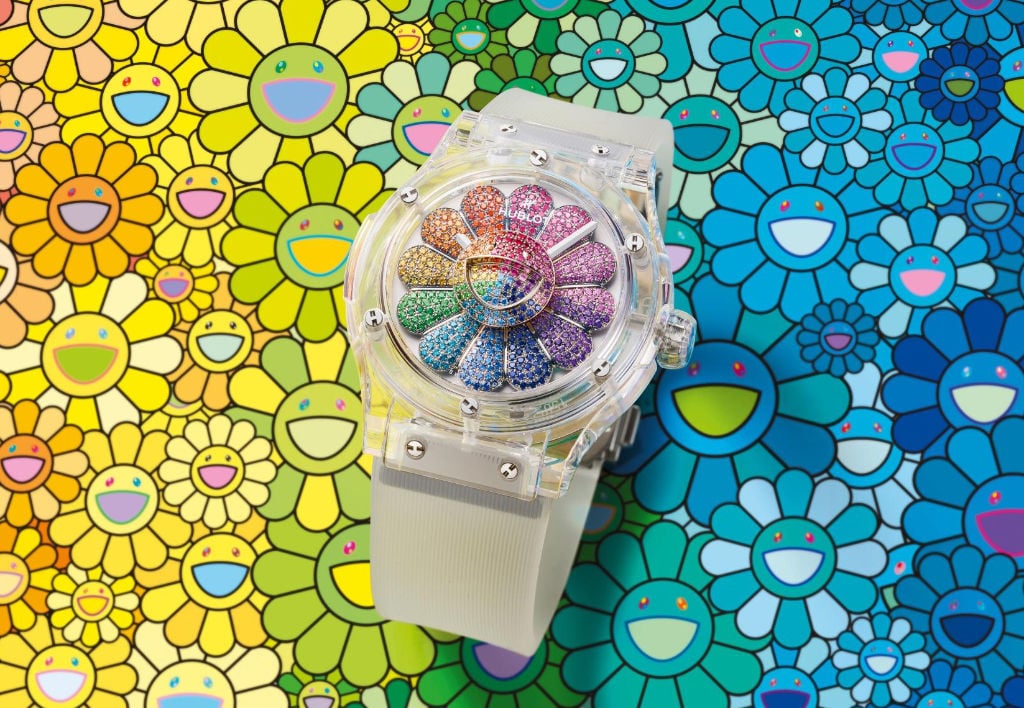
The name of this latest watch immediately describes its character. Murakami dresses every part of what was previously black into color. At the same time, the case becomes transparent sapphire crystal, for an experience on the wrist that becomes radically different and complementary to that of its black “brother,” as if it were a sort of yin and yang in watch form.
And perhaps this was Murakami’s intention: to create a two-act work that would show his intervention not only on an object but in time – one of the artistic obsessions that animate his work.
In this case, the black diamonds are replaced by a universe of multicolored stones, whose reflections sparkle inside the sapphire crystal case. A vivid and iridescent rainbow that enchants us and takes us into Murakami’s dreamy and playful world.
The timepiece technique and stats
From a strictly technical point of view, there’s nothing new under the sun.
In the case of the Black version, the case is made of ceramic with a mirror and brushed finish, while in the Rainbow version, the case is made of sapphire crystal. In both cases, the watches mount the HUB1214 UNICO movement – an automatic manufacture movement with 72-hour power reserve and silicon escapement, usually only found in the chronograph version. This is the first time Hublot has mounted a simplified version of it in a solo timepiece in the Classic Fusion line – but with the cost of these two timepieces, it was presumable that the House wanted to do something more for its buyers.
As is often the case with Hublot, these are limited series. The Black version was produced in a limited edition of 200 pieces, while the Rainbow version was built in just 100 pieces, with prices starting at $26,000 for the Black and $106,000 for the Rainbow. Obviously, they already sold out.

